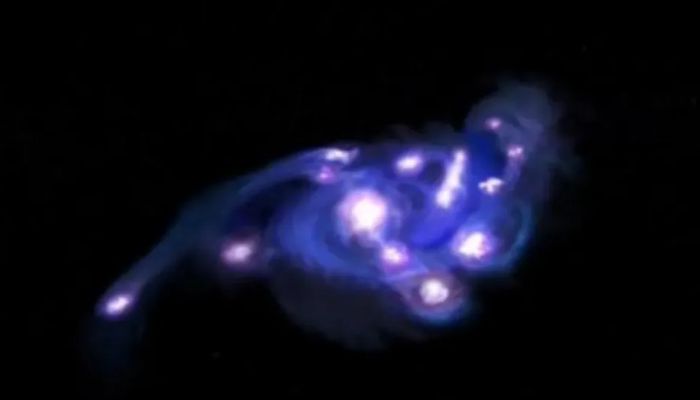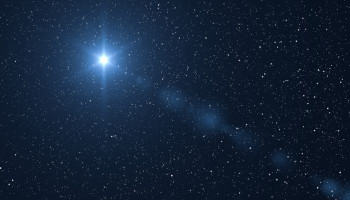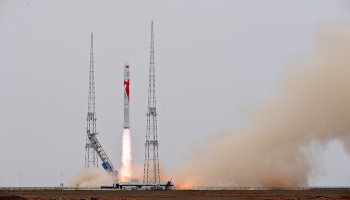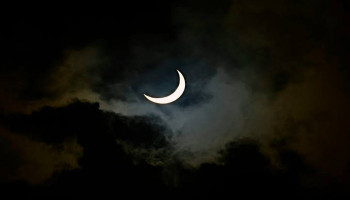
An astronomical team has made a stunning discovery, revealing a galaxy from the early universe that defies expectations.
This prehistoric celestial body is home to more than 15 compact clusters of star-forming regions arranged in a remarkable disc-like structure that resembles a revolving disc of vivid purple grapes known as the "Cosmic Grapes" galaxy.
According to estimates, the Cosmic Grapes galaxy formed an astounding 930 million years after the Big Bang.
The research group used the foreground galaxy RXCJ0600-2007 as a lens to magnify the distant galaxy using the potent gravitational lensing technique. "One of the strongest gravitational lenses for distant galaxies that has ever been found is RXCJ0600-2007," said lead author Seiji Fujimoto.
Utilising the capabilities of advanced telescopes like the James Webb Space Telescope (JWST) and ALMA, the team invested more than 100 hours in telescope observations.
The researchers were able to examine the internal structure of the galaxy with previously unheard-of precision thanks to the resolution and detail these observations offered.
For example, "Our observations reveal that massive, dense, compact clumps dominate some early galaxies' young starlight," said a University of Texas researcher, Mike Boylan-Kolchin.
Our knowledge of how galaxies form in the early universe will be greatly impacted by the discovery.
Contrary to popular beliefs regarding the composition of early galaxies, the research team discovered that the clumps in the Cosmic Grapes galaxy display an exceptional equilibrium of mass and density.
This revolutionary discovery opens the door to more investigation into the mysteries of the cosmos and provides an intriguing window into the early years of the universe.
















